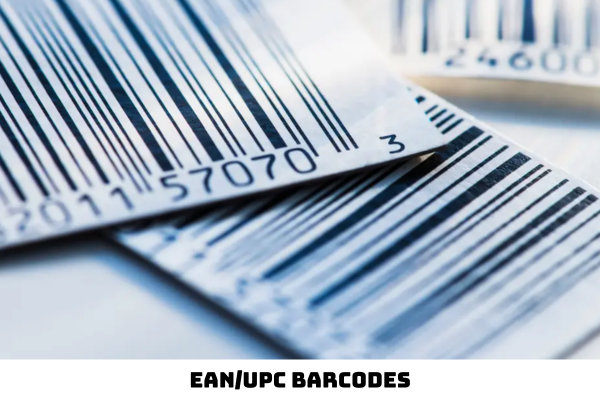What is Vietnam Standard TCVN 7825: 2019 (ISO/IEC 15420: 2009) on Information technology - Automatic identification and data capture techniques?
- What is Vietnam Standard TCVN 7825: 2019 (ISO/IEC 15420: 2009) on Information technology - Automatic identification and data capture techniques?
- What are the general requirements for features of barcodes Vietnam Standard TCVN 7825: 2019?
- What are the guidelines on the decryption under Vietnam Standard TCVN 7825: 2019?
What is Vietnam Standard TCVN 7825: 2019 (ISO/IEC 15420: 2009) on Information technology - Automatic identification and data capture techniques?
Vietnam Standard TCVN 7825: 2019 replaces Vietnam Standard TCVN 7825: 2007.
Vietnam Standard TCVN 7825: 2019 is completely equivalent to ISO/IEC 15420: 2009.
Vietnam Standard TCVN 7825: 2019 is compiled by the technical subcommittee on TCVN/JTC1/SC31 "Automatic data collection", proposed by the Directorate for Standards, Metrology, and Quality, and announced by the Ministry of Science and Technology.
Barcode technology is based on recognizing the encoding signs in the form of bars and spaces of defined sizes. There are many methods of encoding information in the form of barcodes, called barcode encoding. EAN/UPC is a type of barcode. The rules that define the transformation of characters into bar signs and spaces, and other important features of each barcode are called the barcode specification.
Vietnam Standard TCVN 7825: 2019 is used as a reference document specified in the set of documents "General technical regulations of GS1". GS1 manages the numeric system to ensure that the identifiers issued for each specific item are globally unique and identified consistently. The primary benefit for GS1 system users is the availability of a unique identifier for use in their commercial transactions. See Appendix C for an overview of the GS1 system.
NOTE: GS1 is a global association that unites two organizations formerly named EAN International and the Uniform Code Council (UCC).
Barcode equipment manufacturers and users require standardized and widely released barcode specifications that they can refer to when designing devices and software.
Vietnam Standard TCVN 7825: 2019 has the scope of application as follows:
Vietnam Standard TCVN 7825: 2019 specifies specifications for EAN/UPC barcodes. This Vietnam Standard specifies the features of EAN/UPC barcodes, data character encoding, size, tolerances, decoding methods, and parameters defined by the application. This Vietnam Standard specifies the prefix sequences for delineating EAN/UPC barcodes.
The data content and rules for the management and use of barcodes do not fall within the scope of this Vietnam Standard. They are set out in GS1's General Technical Regulations (see bibliography).

What are the general requirements for features of barcodes Vietnam Standard TCVN 7825: 2019?
In Section 4.1 of Vietnam Standard TCVN 7825: 2019, the features of EAN/UPC barcodes are:
- Character set: digits (0 to 9) i.e. ASCII characters 48 to 57 according to ISO 646:
- Barcode type: continuous;
- Number of elements per barcode character: 4, consisting of 2 lines and 2 spaces, each 1, 2, 3 or 4 modules wide (secondary signs with a different number of elements);
- Self-test characters: yes;
- Encoding string length: fixed (8, 12 or 13 characters including check numbers depending on the type of barcode);
- Decoding in multiple directions: yes;
- Barcode check number: one, required (see A.1);
- Barcode character density: 7 modules per barcode character;
- Number of non-data elements, excluding check numbers or blank areas:
+ 11 modules for EAN-13, EAN-8 and UPC-A barcodes;
+ 9 modules for UPC-E barcodes.
What are the guidelines on the decryption under Vietnam Standard TCVN 7825: 2019?
In subsection 4.5.2 Section 4.5 of Vietnam Standard TCVN 7825: 2019 guiding the decryption:
Character decoding for standard barcode characters
The V decoding value must be calculated for each barcode character in sets {0, 3, 4, 5, 6, 9} as specified in TCVN 7626.
Character decoding for 1, 2, 7 and 8
The V decoding value is calculated for each barcode character in sets {1, 2, 7, 8}.
For i = 1 and 2 and j = 2, 3, 4:
K = minimum value { | ei - RTj | }
V1 = K/(S/14)
For characters 1, 2, 7, or 8 odd states, the value V2 is given by:
V2 = [ | (7/S) (combined width of both bars) - 4| ] / (15/13)
For even state 1, 2, 7, or 8 characters, the V2 value is given by:
V2 = [ | (7/S) (combined width of both bars) - 3 | ] / (15/13)
For each character 1, 2, 7, or 8 the decoding value V equals whichever is less than in V1 or V2.
Decoding for secondary signs
V decoding values for sub-signs must be calculated in the same way as for standard barcode characters (n, k), but using values of n, k, and S as follows. The leftmost line and the right warning sign are not included in this calculation.
For warning signs usually left and right of barcodes EAN-13, EAN-8, and UPC-A, n = 2, k = 1; S will be the value of S for the next barcode character immediately to the right or left of the normal warning sign. For the special warning sign at the right end of the UPC-E barcode, n=4, k=2; S will be the value of S for the barcode character immediately after the left of the special warning sign.
For the central warning sign of EAN-13 and UPC-A barcodes, n=4, k=2. First of all, calculate V1 for the first four elements (space - line - space - bar) using the value S for the barcode character just to the left of the central warning sign; then calculate V2 for the last four elements (line - space - line - space) using the S value for the barcode character just to the right of the central warning sign. The value of V for the central warning sign will be the lower value in V1 and V2.
LawNet